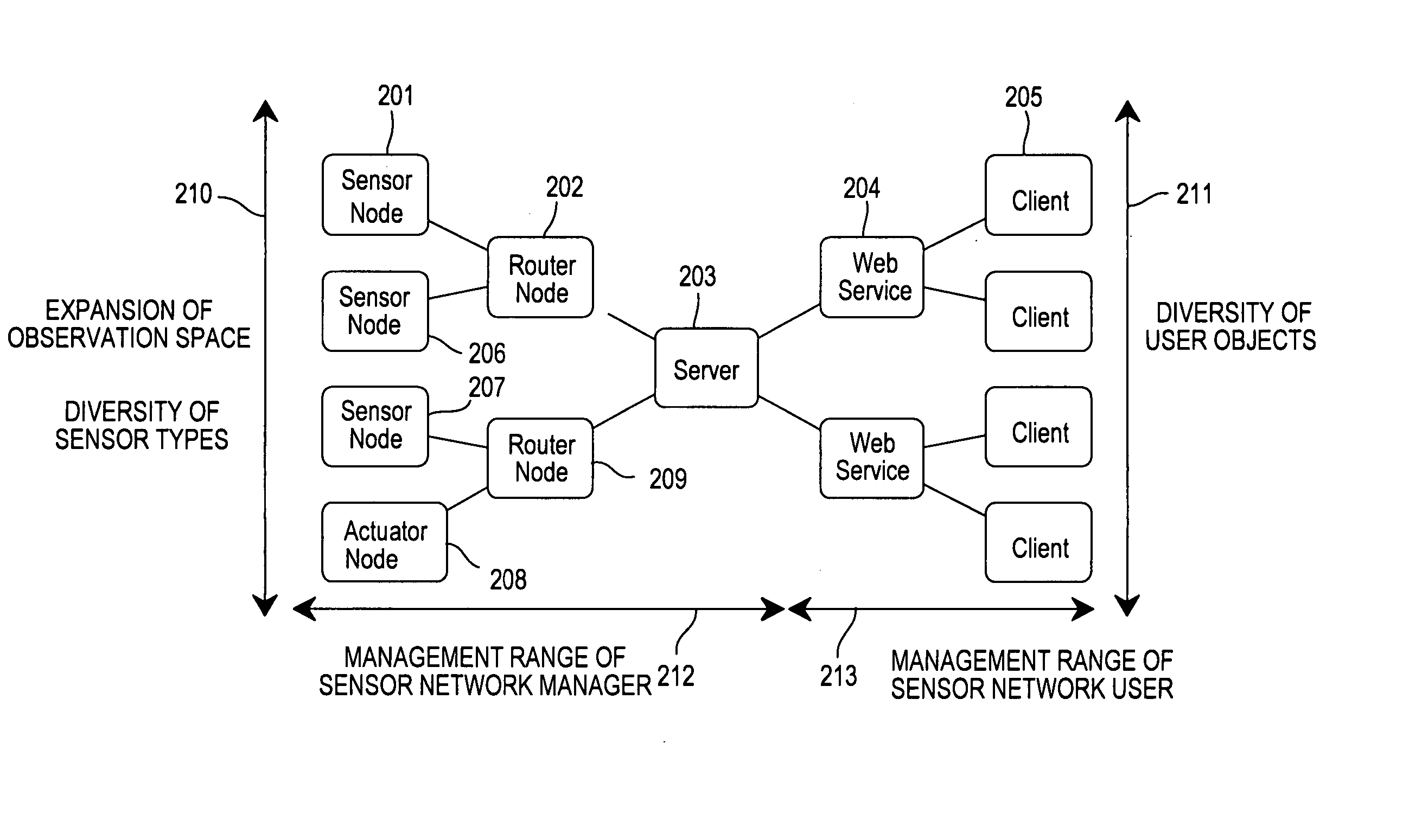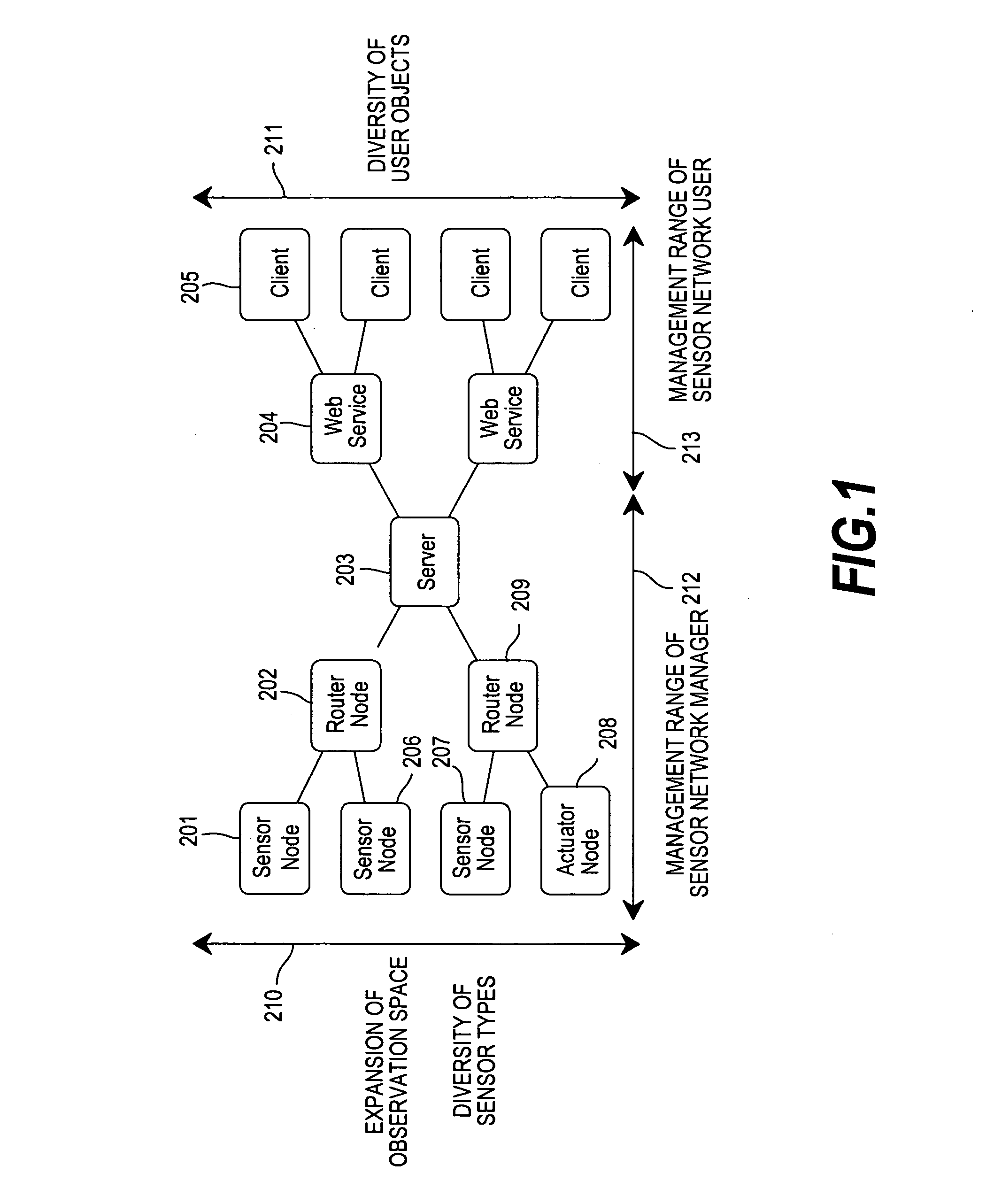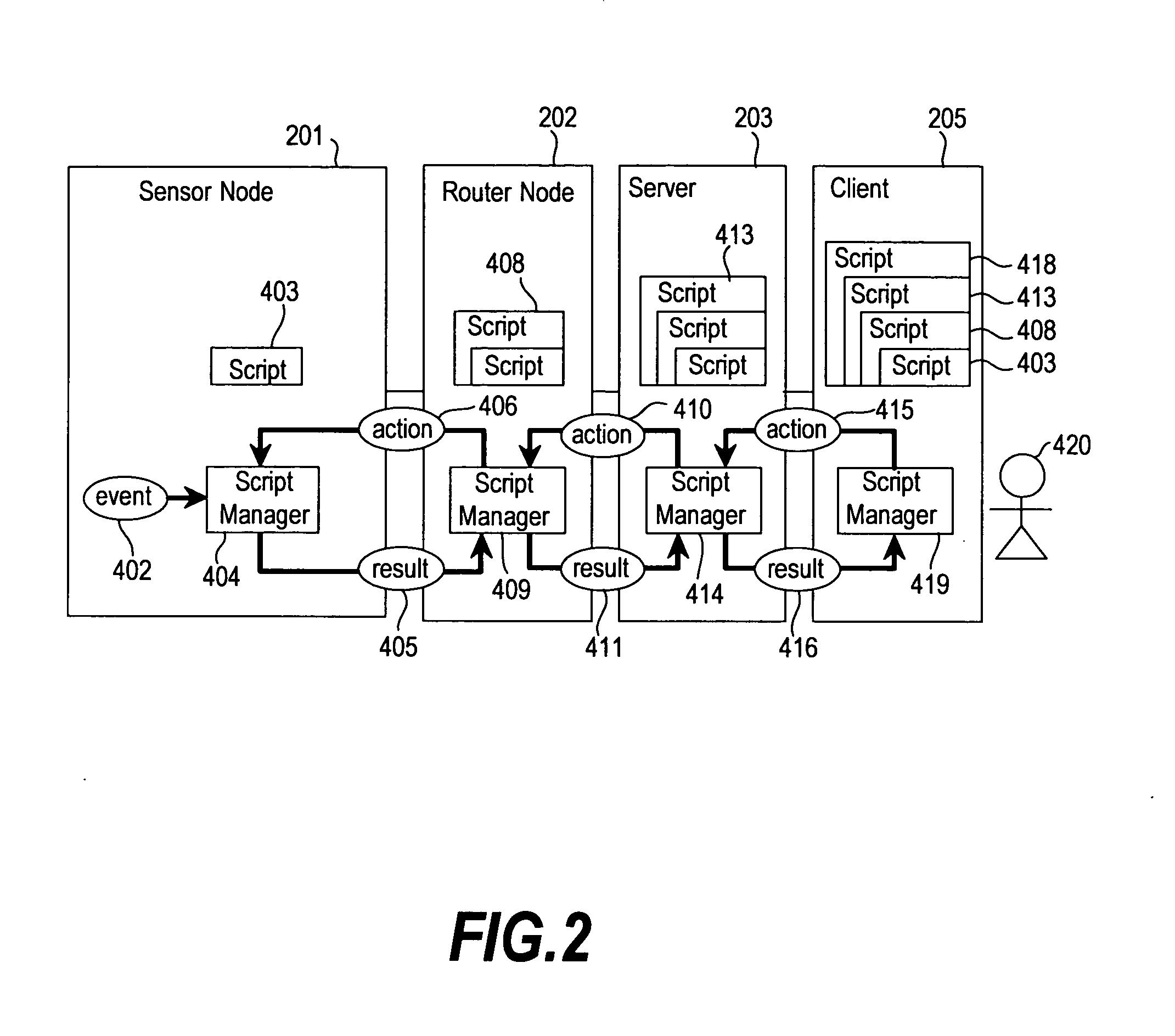Sensor network system, method for data processing of a sensor network system
a sensor network and sensor technology, applied in the field method for data processing of sensor network system, can solve the problems of large program on the node, difficult to change the operation flow, and inability to transmit through radio communication, so as to reduce the number of events to be distributed, reduce the load concentration of the server, and reduce the power consumption of each node.
- Summary
- Abstract
- Description
- Claims
- Application Information
AI Technical Summary
Benefits of technology
Problems solved by technology
Method used
Image
Examples
second embodiment
[0299]FIG. 25 shows a sensor network which includes a plurality of clients having different objects according to a
[0300] Referring to FIG. 25, the sensor network including a sensor node 2601, a server 2607, and clients 2614 and 2615 having different objects is presumed. By requests from the clients 2614 and 2615, different events are processed by an event handler 2602 on the sensor node 2601 to issue two types of secondary events 2605. Other components are similar to those of the first embodiment, the sensor nodes 2601 and 2607 are similar to those of the first embodiment sown in FIG. 4, ands the server 2607 is similar to the server 203.
[0301] Now, a “secondary event identifier problem” which has been a problem of the conventional sensor network and its solution will be described.
[0302] Generally, the event 2605 includes an identifier for identifying a type of an event, and an event parameter. In this case, a problem as to who decides the identifier for identifying the type of an ...
first embodiment
[0303] According to this invention, as shown in FIG. 3 of the first embodiment, the secondary event is replaced by the action completion event 116 which is a return of the asynchronous action, and an event return destination is decided by the action ID 113 and the command ID 114. Accordingly, the secondary event identifier problem will not occur.
[0304] Referring to FIG. 25, an “event leakage problem” that has been a problem of the conventional sensor network and its solution will be described.
[0305] A secondary event 2605 output as a result of information processing at the event handler 2602 of the sensor node 2601 is valuable information created corresponding to a user request, and it should not be leaked to other users having opposite advantages. When the event 2605 is bugged on a communication route, there is a possibility of leakage of an event type and an event return destination.
[0306] According to this invention, as shown in FIG. 3, the action completion event 116 does not ...
third embodiment
[0308]FIGS. 26 and 27 shows an example where one client handles a plurality of sensor nodes by a plurality of rules according to a
[0309] Referring to FIG. 26, a sensor network includes a human detection sensor node 2701 for issuing a “human detection event”, a temperature sensor node 2702 for issuing a “temperature observation event”, and a server 2703 having an event handler 2704 mounted thereon to receive those events. Other components are similar to those of the first embodiment. The sensor nodes 2701 and 2702 are similar to the sensor node 201 of the first embodiment, and the server 2703 is similar to the server 203 of the first embodiment.
[0310] Consideration will be given to a case of mounting the following rules in the event handler 2704 of the server 2703. [0311] [Rule 31] An air conditioner is started when a room in which a human is present is at 30° C. or more. [0312] [Rule 32] When a room temperature is 40° C. or more, fire is determined to issue an evacuation order if t...
PUM
 Login to View More
Login to View More Abstract
Description
Claims
Application Information
 Login to View More
Login to View More - R&D
- Intellectual Property
- Life Sciences
- Materials
- Tech Scout
- Unparalleled Data Quality
- Higher Quality Content
- 60% Fewer Hallucinations
Browse by: Latest US Patents, China's latest patents, Technical Efficacy Thesaurus, Application Domain, Technology Topic, Popular Technical Reports.
© 2025 PatSnap. All rights reserved.Legal|Privacy policy|Modern Slavery Act Transparency Statement|Sitemap|About US| Contact US: help@patsnap.com



